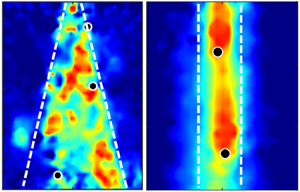Refine listing
Actions for selected content:
1417150 results in Open Access
PDJ volume 38 issue 3 Cover and Back matter
-
- Journal:
- Powder Diffraction / Volume 38 / Issue 3 / September 2023
- Published online by Cambridge University Press:
- 13 November 2023, pp. b1-b2
-
- Article
-
- You have access
- Export citation
Manuel Gonzalo, India from Latin America: Peripherisation, Statebuilding, and Demand-Led Growth (Abingdon: Routledge, 2022), pp. 290, $128 (hardcover). ISBN: 9780367542023.
-
- Journal:
- Journal of the History of Economic Thought / Volume 46 / Issue 2 / June 2024
- Published online by Cambridge University Press:
- 13 November 2023, pp. 321-323
- Print publication:
- June 2024
-
- Article
- Export citation
Calendar of Short Courses and Workshops
-
- Journal:
- Powder Diffraction / Volume 38 / Issue 3 / September 2023
- Published online by Cambridge University Press:
- 13 November 2023, p. 232
-
- Article
-
- You have access
- HTML
- Export citation
On the settling of aligned spherical particles in various quiescent media
-
- Journal:
- Journal of Fluid Mechanics / Volume 975 / 25 November 2023
- Published online by Cambridge University Press:
- 13 November 2023, R1
-
- Article
-
- You have access
- Open access
- HTML
- Export citation
Submitral aneurysm correction with mitral valve repair: a case report
-
- Journal:
- Cardiology in the Young / Volume 34 / Issue 1 / January 2024
- Published online by Cambridge University Press:
- 13 November 2023, pp. 198-200
-
- Article
- Export citation
Stabilized automorphism group of odometers and of Toeplitz subshifts
- Part of
-
- Journal:
- Ergodic Theory and Dynamical Systems / Volume 44 / Issue 8 / August 2024
- Published online by Cambridge University Press:
- 13 November 2023, pp. 2289-2307
- Print publication:
- August 2024
-
- Article
- Export citation
Against the Entitlement Model of Obligation
-
- Journal:
- Canadian Journal of Philosophy / Volume 53 / Issue 2 / February 2023
- Published online by Cambridge University Press:
- 13 November 2023, pp. 138-155
-
- Article
-
- You have access
- Open access
- HTML
- Export citation
Legal research and the public good: the current landscape
-
- Journal:
- Legal Studies / Volume 43 / Issue 4 / December 2023
- Published online by Cambridge University Press:
- 13 November 2023, pp. 569-582
- Print publication:
- December 2023
-
- Article
-
- You have access
- Open access
- HTML
- Export citation
Macauba (Acrocomia aculeata) pulp oil has the potential to enhance the intestinal barrier morphology, goblet cell proliferation and gut microbiota composition in mice fed a high-fat diet
-
- Journal:
- British Journal of Nutrition / Volume 131 / Issue 6 / 28 March 2024
- Published online by Cambridge University Press:
- 13 November 2023, pp. 987-996
- Print publication:
- 28 March 2024
-
- Article
-
- You have access
- HTML
- Export citation
The Ethiopian wolf can act as a flagship and umbrella species to protect the Afroalpine ecosystem and foster sustainable development
-
- Journal:
- Environmental Conservation / Volume 51 / Issue 1 / March 2024
- Published online by Cambridge University Press:
- 13 November 2023, pp. 45-54
-
- Article
-
- You have access
- Open access
- HTML
- Export citation
Puberty as a DOHaD programming window: high-fat diet induces long-term hepatic dysfunction in male rats
-
- Journal:
- Journal of Developmental Origins of Health and Disease / Volume 14 / Issue 5 / October 2023
- Published online by Cambridge University Press:
- 13 November 2023, pp. 614-622
-
- Article
- Export citation
Crystal structure of calcium L-5-methyltetrahydrofolate trihydrate type I, C20H23N7O6Ca(H2O)3
-
- Journal:
- Powder Diffraction / Volume 38 / Issue 3 / September 2023
- Published online by Cambridge University Press:
- 13 November 2023, pp. 207-214
-
- Article
-
- You have access
- Open access
- HTML
- Export citation
Gambling and Elizabethan Gentlemen
-
- Journal:
- Journal of British Studies / Volume 62 / Issue 4 / October 2023
- Published online by Cambridge University Press:
- 13 November 2023, pp. 880-905
-
- Article
- Export citation
The mid-term outcomes of aortic root replacement after surgical repair for CHD
-
- Journal:
- Cardiology in the Young / Volume 34 / Issue 4 / April 2024
- Published online by Cambridge University Press:
- 13 November 2023, pp. 891-899
-
- Article
- Export citation
The difference multiplicity makes: The American Civil War as passive revolution
-
- Journal:
- Review of International Studies / Volume 50 / Issue 5 / September 2024
- Published online by Cambridge University Press:
- 13 November 2023, pp. 836-855
- Print publication:
- September 2024
-
- Article
- Export citation
Ethical power: a supplement to the trade union’s power resources approach
-
- Journal:
- The Economic and Labour Relations Review / Volume 34 / Issue 4 / December 2023
- Published online by Cambridge University Press:
- 13 November 2023, pp. 787-804
-
- Article
- Export citation
Compactifications of moduli of del Pezzo surfaces via line arrangement and K-stability
- Part of
-
- Journal:
- Canadian Journal of Mathematics / Volume 76 / Issue 6 / December 2024
- Published online by Cambridge University Press:
- 13 November 2023, pp. 2115-2135
- Print publication:
- December 2024
-
- Article
- Export citation



















